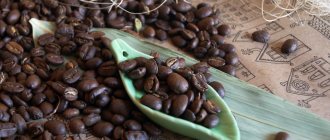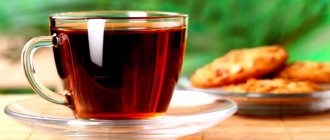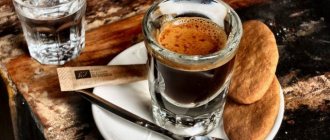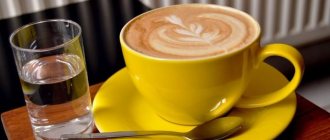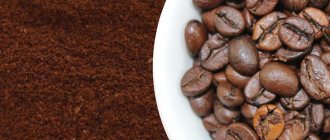Greetings, dear friends!
For most people on the planet, coffee has become an integral part of their well-being. When they wake up, the first thing they tend to do is brew a cup of aromatic, caffeinated potion. But do they wonder what harm such a habit causes to the body?
Decaffeinated drinks are a great alternative to coffee. I would like to talk about this and more in today’s article. After all, being informed means being armed!
An incredible number of cups of a piquant drink in the variations of Americano, espresso or cappuccino deals a powerful blow to a person’s well-being. How does this happen?
Liters of coffee consumed increase the sensitivity of dopamine receptors. We can feel satisfied, fresh and cheerful thanks to such magical effects.
Dopamine is often called the “hormone of joy” and its production causes a person to fall into a phantom state of happiness and good spirits, which passes over time.
This trap is caused by a substance called adenosine. Caffeine acts as an opposing side in the battle with adenosine and emerges victorious in the battle.
In turn, adenosine receptors throw out a white flag, and we feel a spectacular state of power and a surge of strength. That is why coffee is able to overcome drowsiness, lethargy and carry with it an even deeper problem - insomnia.
That is, a person who is hooked on a dose of caffeine independently develops in his body a similar addiction to surrogates of states. But what consequences does this action entail?
Of course, the first blow is taken by the central nervous system, which is capable of throwing out feints from such substances. The caffeine contained in coffee also stimulates unhealthy heart function. From here, the individual may notice an increase in blood pressure and arrhythmia.
In addition to the above obvious problems, there is a significant impact on the functioning of the gastrointestinal tract. Increased gastric secretion can later lead to gastritis or stomach ulcers if you drink coffee on an empty stomach. In some cases, the “lucky ones” may develop diuresis, that is, problems with urination.
Blooming Sally
It is also called fireweed - a drink that has a very pleasant taste and color, which has a powerful healing effect. It was this drink that was drunk in Ancient Rus'. Now on the shelves of pharmacies and eco-stores you can find a wide variety of this drink with various additives in the form of dried berries or other herbs. When choosing, be sure to pay attention to the fact that the fireweed leaf is fermented. Why is this tea so attractive to fans of a healthy lifestyle? It does not contain such negative elements as oxalic acid, purine bases and caffeine. You can write not only a separate article, but an entire book about the benefits of fireweed. The main advantages of tea are that it contains a large number of macro- and microelements, improves immunity, alkalizes the blood and has cleansing properties, useful not only for female beauty, but also for male strength.
What is caffeine and why is it dangerous?
Caffeine was discovered by the German chemist F. Runge in 1819. This is a psychostimulant. Caffeine has a positive effect on the brain and tone of a person. But excessive consumption of caffeinated drinks has an adverse effect on the condition of blood vessels and the heart. Caffeine can:
- cause tachycardia;
- increase blood pressure;
- disrupt the functioning of the gastrointestinal tract.
Therefore, it is worth observing moderation in everything, including taking caffeinated drinks. Scientific research has shown that it is safe to drink up to 12 cups of tea per day. Agree, each of us drinks much less. This means that we do not face any negative consequences from tea with caffeine. And two or three cups of a good, freshly prepared drink will only bring benefits and will promote tone.
But scientists warn: it's all about what kind of tea you drink. Green tea contains more caffeine than other teas. One cup contains up to 85 mg. When compared to different brands of black tea, black tea contains 71 mg of caffeine per cup. Therefore, the amount of green tea you drink should still be reduced. It is also worth considering that green tea can be brewed repeatedly, and with each brew the amount of caffeine will gradually decrease.
Rooibos tea
Rooibos tea is not just an aromatic and tasty drink, but also very healthy. This tea contains antioxidants that have anti-aging properties, and a number of vitamins (C, E, P, A) and trace elements such as potassium, fluorine, zinc, iron and many others. Rooibos tea has a tonic effect, strengthens the immune system, and fills the body with vitality. Despite its tonic effect, rooibos does not contain caffeine. Thanks to this, it can be consumed at any time of the day and in any quantity. Rooibos is not contraindicated for elderly people suffering from high blood pressure, small children, pregnant and nursing mothers. Rooibos infusion is recommended for babies for insomnia and colic. Some people don’t like this tea – it’s a matter of taste, but there is another possible reason – poor quality raw materials. Here is an example of a pleasant drink - organic rooibos tea with orange and mint, which has not left anyone indifferent.
Types of tea by shape
Powder
Powdered tea is similar in appearance to colored flour or powder. This type of tea includes classic matcha made from green tea, blue matcha based on the clitoris trifos, hojicha (ground roasted green tea), pink matcha, as well as traditional black tea in the form of powder. The drink should be brewed in a special way - whipping with a whisk, cappuccino maker or using a blender.
loose
It is loose leaf tea that we buy most often. It exists in the form of individual leaves or parts thereof. This tea is sold packaged in sealed packages or can be purchased by weight. Loose leaf tea should be brewed according to the classic instructions - in a teapot/French press/gaiwan for a certain amount of time.
Connected
This form of tea was invented in China and is more of a decorative way of presentation. Bound tea is brewed to enjoy the beauty of the leaves and flowers blooming in the hot water and to enter a meditative, contemplative state. Most often, green or white tea is bound by placing a clover, chrysanthemum, rose, jasmine, etc. flower inside.
Pressed
Pressed tea comes in the form of solid briquettes or “pancakes” in which the leaves have been compressed under pressure into a specific, durable shape. To brew such tea, you must first chop off the required amount of tea leaves from the bar. If it is pu-erh, it is recommended to use a special knife that helps deal with dense “bricks”.
Bagged
This category includes tea in bags, pyramids, sticks and capsules. This type of tea was considered to be of lower quality in the past, but these days it is gradually gaining more and more trust among consumers thanks to the new technologies used for its production.
Extract
Tea in liquid form, ready to drink immediately after adding to water. Sold in small stick bags and is a mixture of syrup and plant extract. Typically contains artificial additives to extend shelf life.
Lumpy
A rare type of tea, which is typical only for Chinese pu-erh. It is a cross between loose and pressed tea.
Herbal infusions
Nowadays, all self-respecting cafes have at least one herbal tea. Number one is mint tea. It should be noted that dried and fresh mint have different properties: dried mint is relaxing and soothing, while fresh mint is tonic! In a cafe you can often ask for fresh mint tea, and even if it’s not on the menu, then mint is always available for cocktails and, as a rule, they will accommodate you halfway.
Of course, in addition to mint, there is a huge selection of both herbal teas and mono herbal teas, which you can either purchase at any supermarket or prepare yourself. You can dry both wild plants and garden herbs. This topic is very broad and interesting. And if she captivates you, then you will definitely find your favorite combination. Maybe it will be: chamomile, primrose, fennel, lemon balm, St. John's wort, hibiscus? But be careful with herbs during pregnancy! Since during this period, an overdose of even such common herbs as chamomile and mint can be dangerous.
Types of tea by additives
Tea can be made completely without additives (mono-tea) or supplemented with a flavor and aromatic composition of various components.
Flavored teas are created in two main ways - by adding natural ingredients (flowers, herbs, fruits) or using flavorings.
With natural additives
Natural additives can turn the most ordinary tea into a completely new drink:
- fruits and berries,
- flowers and herbs,
- spices,
- sweets (candied fruits, chocolate).
With flavors
Flavored tea is the choice of people who like an intense and rich taste. Specialists from large chemical laboratories in Europe are working on the creation of high-quality and safe flavors.
Mixed type
Very often, manufacturers use both methods of creating a bright taste, using both natural additives and flavorings.
Fruit and berry teas
You can brew both dried and frozen berries. Now on sale there are both whole dried berries and dried berries and ground into powder, which speeds up brewing. But be careful: blueberry-flavored tea may contain black tea and have nothing to do with blueberries. Choose drinks that are clear in composition and of high quality! For example, sea buckthorn tea increases the body's immunity and resistance to viruses.
Frozen Sea Buckthorn Recipe
Ingredients: 6 tbsp. l. sea buckthorn, a small piece of ginger, 600 ml hot water, honey. Preparation: Place all ingredients in a blender. We filter. Serve with honey. It's incredibly beautiful, tasty and healthy!
What determines the level of caffeine in tea?
When it comes to tea, the price/quality ratio applies.
An expensive drink will have more caffeine than a cheap one. Tea buds and whole leaves, which are found in elite varieties of tea, contain the most of this substance. If we compare common varieties of green and black tea, the first will contain approximately 60-85 mg of alkaloid in one two-hundred-gram glass. The same volume of black tea will contain less caffeine – 40-70 mg.
How rich the tea will be in alkaloids also depends on the place where the raw materials grow. Traditionally, there is more caffeine in the leaves growing on high mountain plantations. In such areas the air is cold, so tea grows slowly.
The caffeine content of tea varieties will be affected by the degree of fermentation of the leaf. The smaller it is, the more invigorating component there will be in the drink. The time for brewing tea and the temperature of the water also matter. This is why white and green teas and oolong teas, which are rich in caffeine, will actually be less intense than black tea. This is due to the fact that such varieties are brewed not with boiling water, but with warm water, plus they do not infuse for long.
Chicory
One of the most common “substitutes” for coffee. For passionate coffee lovers, this may sound like a mockery. However, for some, chicory becomes a real salvation during the period of giving up coffee. Chicory is the dried and roasted root of the plant of the same name. Chicory contains inulin, which lowers blood sugar levels. Chicory contains such important minerals for the skin as calcium, potassium and magnesium, as well as vitamins A, E, B1, B2, B3, C, PP. These vitamins and minerals accelerate the restoration of collagen fibers and tone the skin. And these are just some of the beneficial properties of chicory. There are various mixtures based on chicory with roasted cereals, such as “Inka”. In Estonia there is also a tradition of drinking acorn “coffee”. Typically, dried and lightly fried acorns are mixed with cereals.
Where can you buy decaffeinated green tea?
In our market, decaffeinated green tea is an exotic product: in domestic stores I have not found decaffeinated tea anywhere and in any form - neither leaf nor bagged. The great and mighty Aliexpress understands “decaf tea” as various herbal infusions that have nothing to do with green tea.
Meanwhile, I managed to find bagged decaffeinated green tea from four different brands in the iHerb online store - and nowhere else! (If you know where else such tea is sold at a reasonable price, please let me know.) A month ago I ordered all this from there, received it and thoroughly tasted it. I'll report on the results.
Matcha tea instead of green tea
Matcha is a type of green tea that is made by shading, drying and grinding the leaves of the Camellia sinensis (the name of the common tea bush) into a fine powder.
Unlike brewed green tea, when drinking matcha, you drink the entire leaf rather than an infusion of the leaves, giving your body a much more concentrated source of antioxidants— epigallocatechin gallate (EGCG) in particular.
Most of the beneficial properties of matcha are attributed to this substance. For example, research suggests that regular consumption of green tea reduces the risks of high blood pressure, type 2 diabetes and cancer.
The drink has also been associated with weight loss and overall staying in good physical shape. Matcha has a fresh flavor that is often described as earthy.
Cooking method:
- Sift 1-2 teaspoons of matcha powder into a ceramic bowl using a fine strainer.
- Add hot but not boiling water. The temperature should be around 70–80 °C.
- Stir slowly until the powder dissolves, then whisk until smooth. A special bamboo chasen whisk is best suited for this purpose.
- As soon as a light foam has formed, the tea is ready.
- You can add warm regular or plant-based milk to create a sort of matcha latte that you can drink instead of coffee.
Due to the integrity of the leaves used in its production, matcha has a higher amount of caffeine than regular green tea and sometimes even coffee.
Acorn coffee
Acorns contain carbohydrates, proteins, tannins and tannins. They contain quercetin to combat spasms and inflammation, and starch. In addition, they are able to have an antioxidant and diuretic effect. Coffee is made from acorns and is considered one of the best substitutes for the traditional drink. This decoction tones and has a beneficial effect on the body in diseases of the respiratory and digestive system, and heart pathologies.
The powder is produced mainly in special factories, but you can also make it yourself. To do this you need to take acorns. It is better to collect them in late autumn. Only ripe and whole fruits are selected, after which they are sent to the oven for baking. You have to keep them until they turn pink. The baked nuts are peeled and ground. The drink is prepared in a Turk. But you can just take 1 tsp. powder to dissolve in boiling water. Ready-made coffee is not inferior to natural coffee in taste and is healthy.

